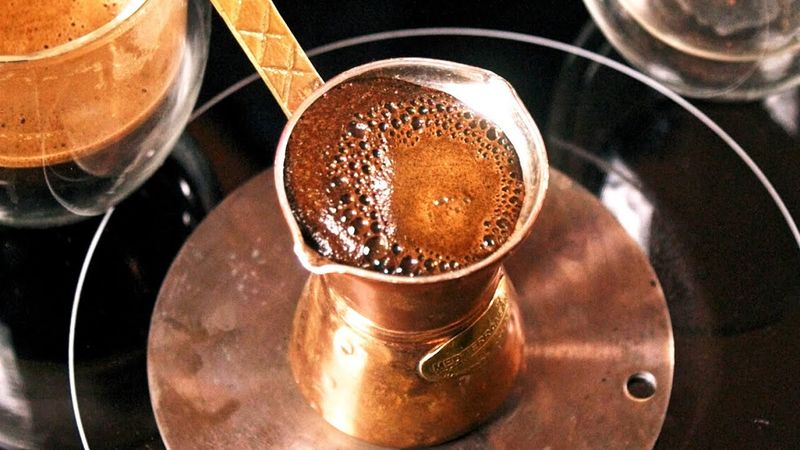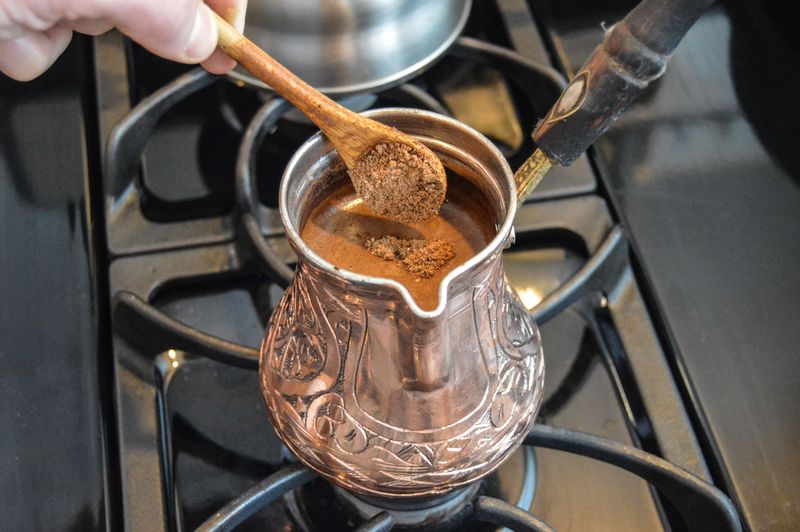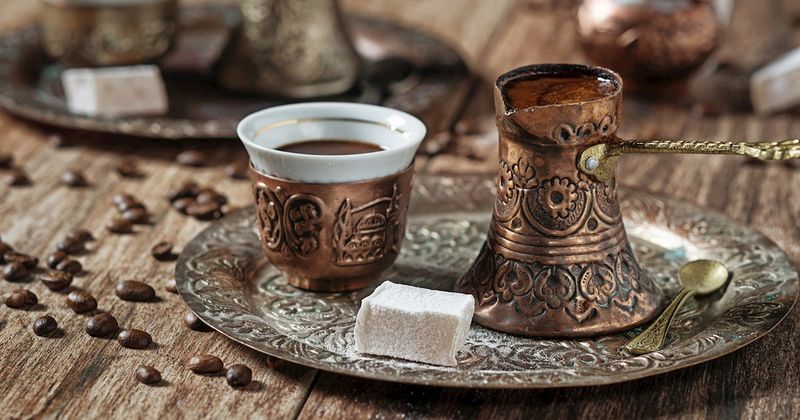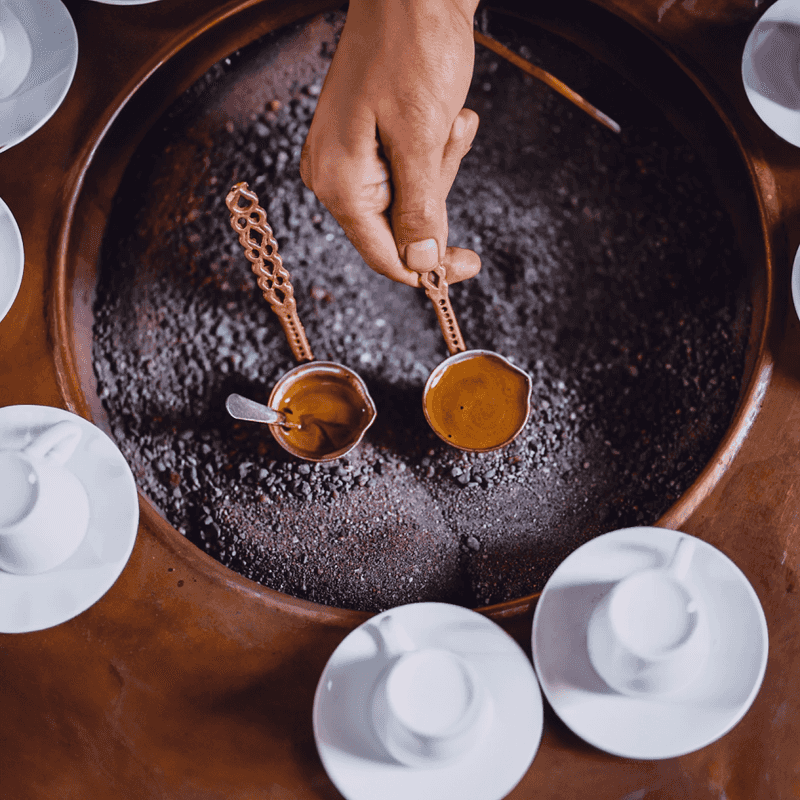Turkish coffee is more than just a beverage; it’s a cultural experience that dates back centuries. This rich, aromatic brew has its unique set of rules and traditions that can make or break your coffee experience. Whether you’re a seasoned coffee enthusiast or a curious first-timer, understanding the common pitfalls can elevate your Turkish coffee journey to new heights.
Grinding the Beans Incorrectly

The art of Turkish coffee begins with the grind. Many people mistakenly use coffee beans that are too coarse, leading to a weak and flavorless brew. The beans should be ground to a fine, almost powder-like consistency. This allows the coffee to dissolve perfectly, creating that signature thick texture and strong flavor. The grinding process is crucial, as it impacts the overall taste and aroma of the coffee. If you’re not using a traditional grinder, you may miss out on the authentic experience.
Using Cold Water

Temperature plays a pivotal role in brewing Turkish coffee. A common mistake is using cold or even lukewarm water, which can hinder the coffee’s extraction. Always start with hot water to ensure a smooth and rich blend. This method allows the coffee grounds to release their full flavor and aroma. The water should be near boiling when mixed with the coffee, paving the way for the foam that characterizes a well-brewed cup. Without the right temperature, you’ll miss out on the velvet-like finish that Turkish coffee is known for.
Skipping the Foam

Foam is the crown of Turkish coffee, yet many fail to achieve it. Skipping the foam results in a less authentic experience. The foam is created by the slow heating process, which allows the coffee to form a thick layer on top. This foam not only enhances the visual appeal but also adds a creamy texture to every sip. To achieve this, patience is key; resist the urge to rush the brewing process. Remember, the foam is a sign of a well-prepared cup, reflecting the care and tradition behind each brew.
Overlooking Sugar Preferences

Personalizing sugar levels is a crucial part of the Turkish coffee tradition. Some people overlook this step, resulting in a taste that doesn’t suit their preference. Turkish coffee can be sweetened in three ways: unsweetened (sade), medium (orta), or sweet (şekerli). Deciding on the sugar level before brewing ensures the sugar is evenly distributed, blending seamlessly with the coffee. Customizing the sweetness allows each drinker to enjoy their coffee just the way they like it, heightening the personalized experience.
Stirring Too Much

While stirring might seem like a minor detail, it’s a mistake that can alter your coffee’s flavor. Excessive stirring can disrupt the coffee grounds, leading to sediment in your cup. It’s best to stir gently, just enough to mix the coffee and sugar, and then let it brew. This gentle approach preserves the integrity of the foam and ensures a cleaner, more enjoyable cup. Overstirring can agitate the coffee too much, preventing the formation of that essential layer of foam.
Ignoring Traditional Serving Style

The way Turkish coffee is served is as important as how it is brewed. Ignoring the traditional serving style, which includes serving the coffee with a glass of water and a piece of Turkish delight, can diminish the full cultural experience. The water cleanses the palate, and the sweet delight complements the coffee’s bold flavor. This tradition enhances the enjoyment and is a testament to the hospitality associated with Turkish coffee culture. By embracing these customs, you can offer a more authentic and rich experience.
Using the Wrong Coffee Pot

The cezve, or Turkish coffee pot, is essential for authentic brewing. Using the wrong type can affect the taste and quality of the coffee. Traditional pots are often made from copper or brass, materials known for their excellent heat conductivity. These metals ensure an even heat distribution, crucial for achieving the perfect foam and flavor balance. Opting for a non-traditional pot might lead to uneven brewing and a less satisfying cup. Choosing the right cezve adds to the authenticity and taste of your coffee.
Neglecting the Brewing Time

The brewing time for Turkish coffee is a delicate balance. Neglecting it can lead to an underbrewed or overcooked coffee. The coffee should be heated slowly over low flame, allowing the flavors to develop fully. This slow brewing process is what gives Turkish coffee its intense flavor profile and thick foam. Rushing this step can result in a weak or burnt taste, disappointing those looking for an authentic experience. The right timing is crucial for capturing the essence of Turkish coffee.
Disregarding the Importance of Freshness

Freshness is often overlooked but vital for a great cup of Turkish coffee. Using stale or old coffee beans can result in a dull and lifeless brew. Freshly roasted beans provide a vibrant aroma and robust flavor that are hallmarks of Turkish coffee. It’s best to buy in small quantities and grind just before brewing to maintain this freshness. Ensuring the beans are fresh is key to experiencing the true taste and aroma Turkish coffee is famed for.
Serving Coffee Without Letting It Settle

Serving Turkish coffee immediately after brewing can lead to a gritty texture. Allowing the coffee to settle for a few moments enables the grounds to sink to the bottom, ensuring a smoother drink. This settling time is short but essential for preventing a mouthful of grounds with each sip. Patience at this stage ensures a velvety and enjoyable coffee experience, highlighting the smooth texture and rich flavor that Turkish coffee is celebrated for.
Leave a comment